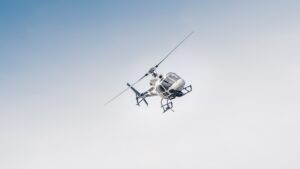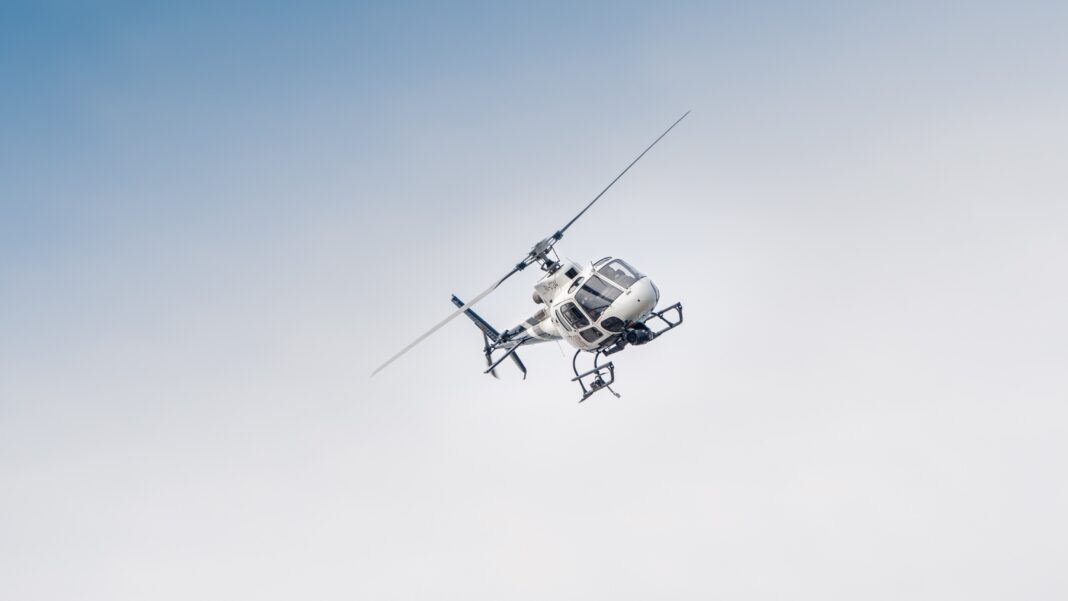Three men, California Department of Forestry and Fire Protection Assistant Chief Joshua Bischof, 46, Cal Fire Capt. Tim Rodriguez, 44, and contract pilot Tony Sousa, 55, were killed in a Riverside County helicopter collision.
Two choppers struck each other at 6:55 pm on Sunday, August 6 over the skies of Cabazon, with one helicopter crashing and the other landing safely. The mid-air collision occurred while battling a small blaze in Riverside County. The details are sparse, and officials are still investigating what happened.

The aircraft that crashed and killed the three men was a Bell 407 helicopter which was responsible for coordination and observation. The second helicopter, a Sikorsky S-64E (aka a Skycrane) was able to safely land with two people on board.
Mid-air helicopter collisions are highly unusual, and the National Transportation Safety Board (NTSB) was on the scene within 24 hours to investigate the scene and the evidence. Radar data, weather, maintenance records, the pilot’s medical records and more will be looked into. One investigator with the NTSB said it could take up to 2 years before information is available on a final determination.
“Only the bravest of the brave are willing to risk their lives and fight these fires, and now we’ve lost three veterans in the field who were true heroes,” said Riverside fire litigation attorney Gerald Singleton. “Our hearts go out to the family members, loved ones, coworkers and communities coping with this loss.”
If you or someone you know has suffered a helicopter crash injury, contact the attorneys at Singleton Schreiber by calling 213-816-0307 or emailing info@singletonschreiber.com.
Cabazon Helicopter Crash Wrongful Death
The process of gathering evidence involves pilot certification, flight training, as well as an investigation into the aircraft itself. The airframe, the engine and more will be looked at with a fine-tooth comb. Some officials were speculating, but ultimately until the damaged aircraft is examined, there will be no real answers.
The helicopter crash actually caused a separate fire, a 4 acre one dubbed the Bonita Fire, which was extinguished.
Helicopter crashes, although relatively rare compared to other aviation accidents, can result in devastating consequences for both the occupants and anyone on the ground in the vicinity of the crash. The nature and severity of injuries sustained in such accidents are influenced by several factors, including the speed and angle of the crash, the environment into which the helicopter crashes, and the design and safety features of the helicopter.
One of the most common injuries sustained in helicopter crashes is traumatic brain injury (TBI). This can occur when the force of the crash causes the brain to move violently within the skull, resulting in bruising, bleeding, or tearing of the brain tissue. TBIs can range from mild concussions with temporary symptoms to severe and permanent brain damage. The symptoms of a TBI can be physical, such as headaches, dizziness, and blurred vision; cognitive, like memory loss and difficulty concentrating; and emotional, including mood swings and depression.
Spinal cord injuries are also prevalent, especially if the helicopter crashes from a significant height. The vertebrae, discs, or spinal cord can get damaged, leading to temporary or permanent paralysis. The extent of the injury depends on the location and severity of the damage to the spinal cord.
Bone fractures are another common outcome, particularly to the legs, arms, ribs, and pelvis. The sudden deceleration and impact forces in a crash can cause occupants to be thrown violently against the interior of the helicopter or be ejected from it. Crush injuries can also occur if parts of the aircraft intrude into the occupant space during the crash.
Burn injuries can result from post-crash fires, especially if the fuel ignites. These can be among the most severe and life-threatening injuries, given the complications associated with burns, such as infections, scarring, and the need for long-term treatment and rehabilitation.
Soft tissue injuries, such as sprains, strains, and contusions, are also common. These injuries might seem minor initially but can lead to long-term pain and complications if not addressed.
Lastly, the psychological trauma following a helicopter crash should not be underestimated. Survivors often deal with post-traumatic stress disorder (PTSD), anxiety, depression, and other emotional and psychological challenges. The mental scars can be as debilitating as the physical ones.
In this case, three men lost their lives, because the height, speed and exposure of a helicopter put them in an extremely vulnerable position.
“As this process draws out, the families of the deceased must contact an injury attorney right away,” Mr. Singleton added. “Qualified wrongful death lawyers can help families obtain the justice they deserve.”
If you or someone you know has suffered a helicopter crash injury, contact the attorneys at Singleton Schreiber by calling 213-816-0307 or emailing info@singletonschreiber.com.
































